
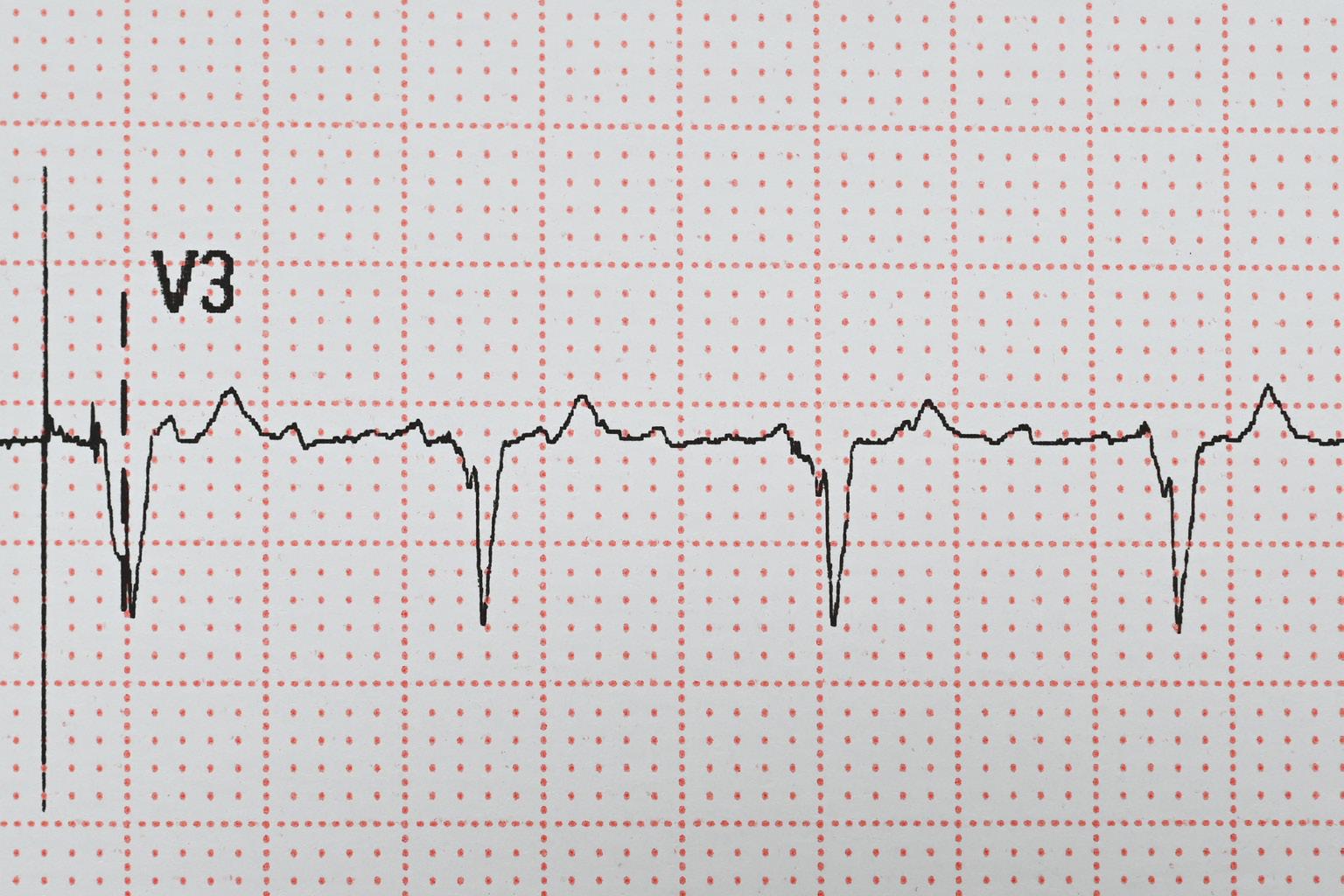







By George W. Chapman


Our new Secretary of Health Robert Kennedy Jr. is laying off 20,000 of the 82,000 employees of the U.S. Department of Health and Human Services. He is closing five of 10 regional offices. The goal is to save $1.8 billion a year. Employees were informed via email accompanied by the tried and true “it’s not you, it’s me” reason. Kennedy will consolidate 28 various divisions like HHS (Health and Human Services), NIH (National Institutes of Health) and FDA (Food and Drug Administration) to 15 divisions under an all-encompassing brand-new moniker called “Administration for a Healthy America” or AHA. (This should not be confused
In his defense, Kennedy has this right. He is a well-known strong proponent of removing or at least reducing the amount of chemicals that are part of processed food. He is little known, however, as a critic of the FDA’s user fees which are paid to the FDA by Big Pharma. User fees make up almost half of the agency’s budget, which invites conflicts. These fees are paid every time there is an application for approval of a new drug. The fee is substantial, which limits applications by smaller upstart firms. The symbiotic wink and a nod relationship between the FDA and Big Pharma is tightened by this user fee. Both Obama and Biden have decried user fees. In fairness, to reduce the Big Pharma influence on the FDA, it has been suggested that user fees should be eliminated and 100% of the FDA budget should be taxpayer supported.
They work and it seems like everyone is taking them. But they are still very expensive. Consequently,

with the American Hospital Association (AHA) or the Norwegian ‘80s pop band A-ha.)
Former Fox journalist Sara Carter, with absolutely zero experience, has been named as drug czar. Top vaccine official Peter Marks, who led operation Warp Speed, which fast tracked COVID-19 vaccine development, was unceremoniously pushed out after eight years stoking fears of “vaccine hesitancy.” About 1,900 scientists sent a letter to the administration accusing them of an all-out assault on science in response to the slashing of funding for research the administration deemed “unacceptable.”
Among hundreds of research
their cost effective ness, at current pric es, was challenged by the JAMA Health Forum. Basically, does the lifetime cost of the drug exceed potential savings on weight-related health costs. So, beyond users looking thinner, are they cost effective? If the price comes down, cost effectiveness goes up. Fortunately, a couple weight loss drugs are on Medicare’s radar and are slated for price negotiation with manufacturers next year. But until then, you begin to understand the insurance industry’s reluctance to cover them.
projects being terminated were vaccine safety during pregnancy and the effectiveness of the shingles vax.
The purge of researchers and scientists has led to a virtual US brain drain. Seizing the opportunity, Europe is offering positions to outof-work American scientists and researchers. For example, Brussels Free University has allotted $2.7 million in funding for at least 12 new post doctorate roles to “censored Americans.” Normally reticent organizations like the Alliance for Regenerative Medicine and the biotech industry have expressed their fears over the erosion of scientific standards. So, all things considered, what could possibly go wrong?

and 2023 as well. To make matters worse, a year after a jury fined J&J $150 million for misleading marketing tactics for two of its HIV meds, a judge stepped in and jacked the fine up to $1.64 billion.
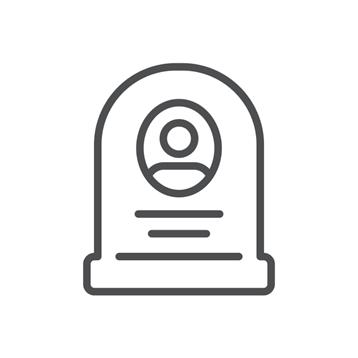
Remember the talcum powder fiasco?
Thousands of cases of cancer, purportedly, were caused by the product. A bankruptcy judge has recently rejected J&J’s offer to settle all past and future cases for $9 billion. This is strike three for J&J as they tried to use the bankruptcy court to settle in 2021

More bad news for the most expensive healthcare “system” in the world. Between the years 2009 and 2019 avoidable deaths in the U.S. increased by 33 per 100,000 people, according to the JAMA, (Journal of the American Medical Association). In all other countries in the study, avoidable deaths decreased by 23 per 100,000. In the European Union, avoidable deaths decreased by 25 per 100,000 people. All countries in the EU have national healthcare plans.
Caveat emptor. (Buyer beware.) Lower premiums are an enticing lure, but you need to really understand the benefits and what you will
end up owing after an outpatient procedure or hospitalization. Your out-of-pocket will most likely far exceed any savings in your monthly pre mium. Short-term health insurance companies do not have to follow rules promulgated by the Affordable Care Act for all regular plans. They do not have reduced premiums based on your income like normal plans offered on the exchange. The dollar cap on procedures and hospitalization are far below what the providers will bill. You will end up owing thousands. The insurer has the last and final word on interpreting their own unregulated rules. Short-term insurers can request a physical and then exclude coverage for the very condition that got you to purchase short-term coverage in the first place. Most have very limited drug coverage if any at all. You are far better off paying another $200 a month or so for legitimate insurance of the exchange. Concerned that consumers will be ripped off by these short-term plans, the Affordable Care Act limited coverage to 90 days. The hope was consumers would turn to longer and more comprehensive coverage offered on the exchange. In his first term, Trump allowed these plans to cover a year. Calling them what they are, “junk insurance.” Biden knocked coverage back to four months. It is expected that once he gets around to it, Trump will allow coverage up to a year again. Are we ready for national health insurance yet?
You may have no ticed it starts earlier and ends later every year. According to the HHS, (or should I say the former HHS?) you’re right. It comes with warming global temperatures. Over the past 30 years pollen, nationwide, has increased 21%. The Allergy and Asthma Foundation says 25% of adults and 20% of children suffer from seasonal allergies. The allergy season is so long now that a lot of people stay on drugs all year. Spring arrives earlier thereby giving plants more time to produce pollen.
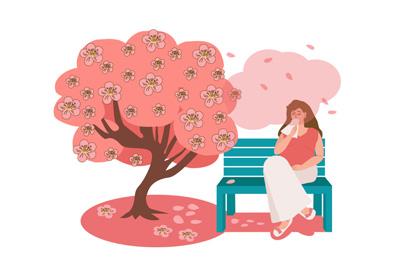
In a list ranking our top 100 cities from worse than average to better than average Wichita, Kansas, ranks No. 1 for worse than average. Boston ranks No. 1 for better than average. Albany, Rochester and Syracuse are in the middle of the ranking so basically average. Dead leaves and grass and wooded areas yield more mold so avoid those as much as possible, Allergists recommend finding out just what you are allergic to and treat accordingly with meds or injections. Nasal sprays are often misused. They are most effective on the outside of your nasal passages versus being shot straight up your nose.


The inability to pay for health care has reached a new high in the United States, a new study says.
More than one-third of Americans — an estimated 91 million people — say they couldn’t afford to access quality health care if they needed it today, according to the latest West Health-Gallup Healthcare Affordability Index.
“The rising trajectory in the inability to pay for healthcare is a disturbing trend that is likely to continue and even accelerate,” said Tim Lash, president of West Health Policy Center, part of a group of nonprofit organizations focused on healthcare and aging.
“Policy action at both the state and federal level is urgently needed, or even more Americans will have to go without treatment or be forced to make painful tradeoffs between paying for medical care or paying for other necessities,” Lash continued in a news release. “The human and economic costs are enormous.”
The Healthcare Affordability Index has been tracking health care access in the U.S. since 2021, researchers said.
Its latest results show that 35% of Americans could not access quality health care if they need it.
Rates were even higher among Black Americans (46%) and Hispanic Americans (52%), results show.
Access to health care remained stable among wealthier Americans, but declined significantly among lower-income households.
About two-thirds (64%) of people earning less than $24,000 said they can’t afford health care, an 11-point increase from 2023, results show.
Likewise, 57% of households with an annual income between $24,000 and $48,000 said they struggle to afford health care, up 12 points
from 2023.
In all, about half (51%) of Amer icans are considered “cost secure,” in that they have faced no recent difficulty affording either health care or prescriptions, researchers found. It’s the lowest level observed since the index started in 2021.
Hispanic Americans have experienced the greatest declines in such security, with 34% saying they have no problem affording health care –down 17 points from 2021.
Black Americans experienced a 13-point drop in health care security, with 41% now saying they don’t struggle with health care bills.
Overall, about 11% of Americans, about 29 million people, are classified as “cost desperate” — meaning they are unable to afford either health care or prescriptions.
Get the Upstate Advantage for your career!
As the region’s largest employer Upstate offers more jobs and more variety, with great benefits.
Visit our website to see the most recent offerings.

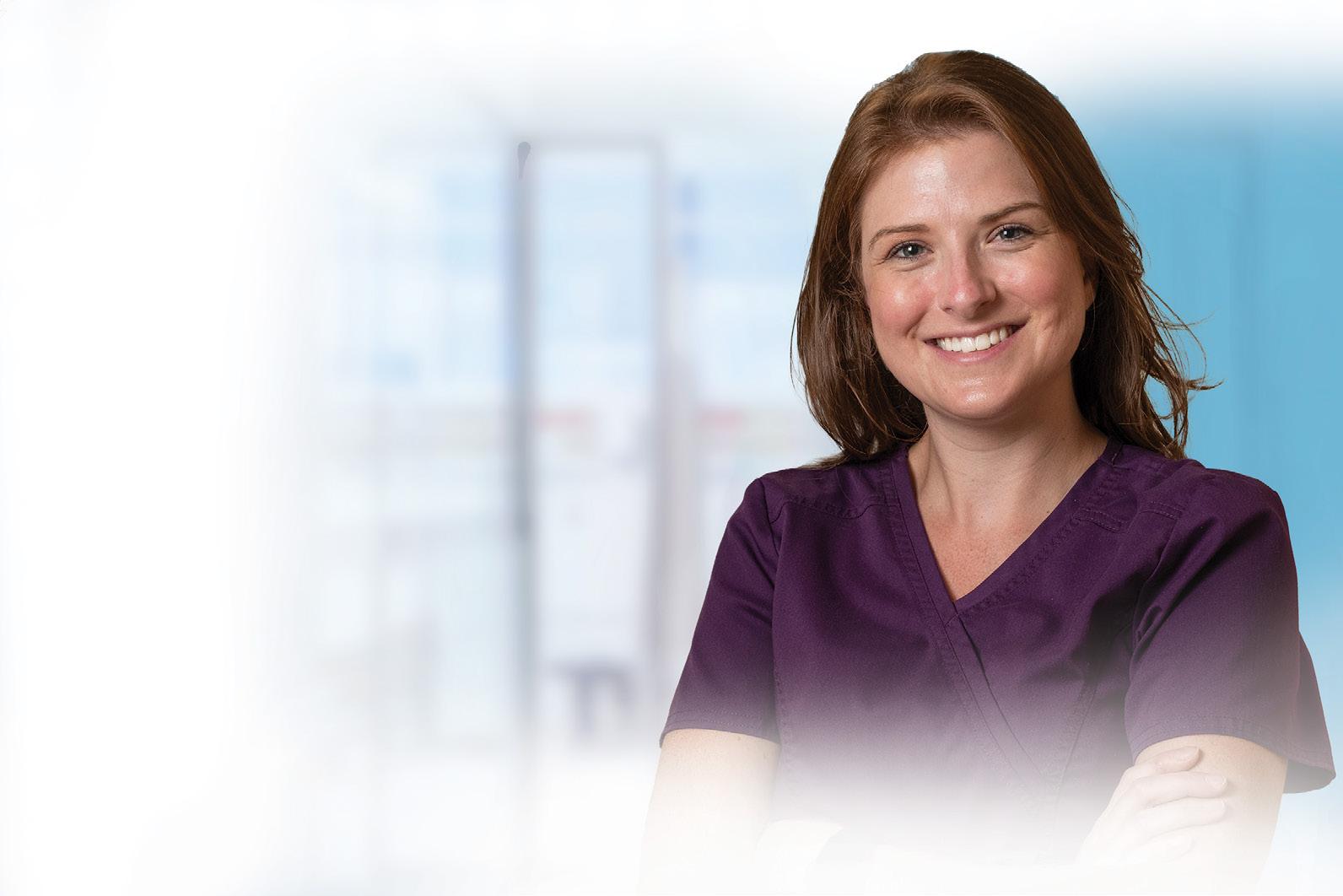
“Healthcare affordability and access continue to erode nationally, and this issue is especially acute among Black, Hispanic, and lower-income adults,” Dan Witters, a senior researcher at Gallup, said in a news release.
“White adults and those in higher-income households, in contrast, remain largely insulated from these worsening trends,” Witters added. “Among these groups, this is the widest gap in access to care we have recorded thus far, with many Americans experiencing increased hardship year over year.”
The survey was conducted online and by mail between Nov. 18 and Dec. 27, 2024, among 6,296 people 18 and older. Respondents were from all 50 states and the District of Columbia. The margin of error for the full sample is plus or minus 1.6 percentage points.
More Americans are struggling to pay for needed health care and prescriptions.
A monthly newspaper published by Local News, Inc. 20,000 copies distributed. To request home delivery ($21 per year), call 315-749-7070.
In Good Health is published 12 times a year by Local News, Inc. © 2025 by Local News, Inc. All rights reserved. 4 Riverside Drive, # 251, Utica, NY 13502 Phone: 315-749-7070 • Email: IGHmohawkvalley@gmail.com
Editor & Publisher: Wagner Dotto • Associate Editor: Stefan Yablonski
Contributing Writers: Barbara Pierce, Deb Dittner, Gwenn Voelckers, David Podos, Deborah Jeanne Sergeant, Anne Palumbo, Jolene Cleaver
Advertising: Amy Gagliano: 315-402-3370 • Email: amyIGHmv@gmail.com
Layout & Design: Angel Campos-Toro • Office Manager: Allison Lockwood
material may be reproduced in whole or in part from this publication without the express written permission of the publisher. The information in this publication is intended to complement — not to take the place of — the recommendations of

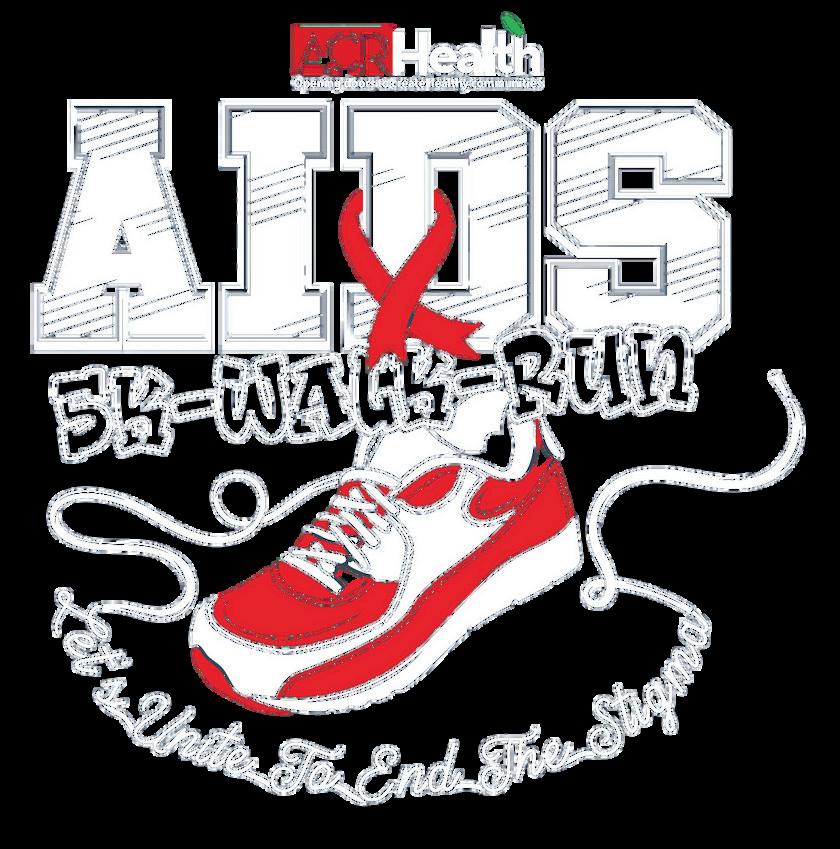




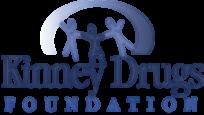




By Gwenn Voelckers
How and why I became a life coach to help women starting over
It was totally unexpected.
I was in my 30s, married and working in the demanding field of nursing home administration when my life — my world — turned upside down.
I got divorced.
There were no children, but the split was still deeply painful. The dreams I had of building a future and family with my husband had suddenly vanished.
Everywhere I looked, it seemed like everyone else was getting married, having babies and living out the life I had imagined for myself. Meanwhile, I was alone and struggling to find my footing.
My divorce felt like a very public failure. I retreated into myself, hiding in my work, my apartment, and — worst of all — hiding from my own pain. I didn’t allow myself to grieve. I didn’t process the loss.
My world grew small and quiet, and my self-esteem plummeted.
It was my mother who noticed. She saw that I was withdrawing, shrinking from the world. One day, with loving but firm conviction, she said, “Gwenn, stop waiting for Mr. Right to come to the rescue. Go create a wonderful life on your own.”
Her words broke through my lethargy. I was ready.
That was the moment I started saying yes to life again. I rebuilt my social circle, focused on my health and fitness and began doing things that brought me joy. I explored hobbies, traveled and invested in my emotional well-being with the help of a therapist.
Slowly but surely, I reclaimed my sense of self. And my life.
Fast forward 20 years: As I approached my 50th birthday, I was living life to the fullest. I owned my own home, had a supportive network of friends and family and


was flourishing at work — proudly earning my nursing home administrator license. I traveled solo with confidence and immersed myself in rediscovered loves — gardening, music, reading and fitness.
Following my mother’s advice paid off and over time, I created a wonderful, independent life for myself. I felt whole, complete and immensely grateful.
With that gratitude came a strong desire to give back. I wanted to help others who were where I had once been — lost, alone and unsure of how to begin again.
But how could I channel that desire into something meaningful?
Then she asked, “What are you good at? What are you proud of?”
Without missing a beat, I said, “I’m really good at living alone.”
Her eyes lit up. “Tell me more.”
As I described how I had built a full, rich, independent life, I could feel something shift. I came alive. My life coach noticed it, too. We realized that my lived experience — the confidence and contentment I had cultivated over the years — could serve as a guidepost for others.
That was the spark we had been looking for.
I began my new journey by writing this monthly column for In Good Health about the realities and joys of living alone. I share stories, tips and encouragement for readers navigating life on their own.
From there, I developed a curriculum for a three-part “Alone and Content” workshop designed to help women in mid-life rediscover themselves after divorce or the death of a spouse.

That’s when I hired a certified life coach. I was familiar with therapy, which had helped me in the past, but this was different. While therapy often focuses on healing from past wounds, a life coach helps you clarify your goals, discover your strengths, and create a vision for your future.
Coaching is forward-focused and action-oriented. It was exactly the kind of help I wanted.
Together, my life coach and I began a journey of discovery. Through a series of probing questions, reflection exercises and honest conversations, I began to uncover my path. Early on, we explored a few directions, but none seemed to spark any real excitement.




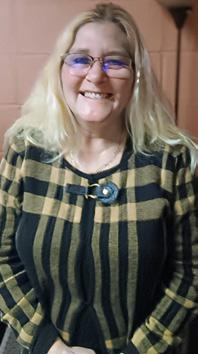

I hosted the workshops in my home — a deliberate choice. I wanted to show women what a joyful, empowered life alone could look like. The response was powerful. Women opened up. They connected. They began to see new possibilities for their own lives.
Then
COVID-19 hit and, like so many others, I had to change direction. I took that time to reflect and reimagine. I knew I wanted to continue doing this good work, to keep helping women navigate the challenges of building a life on their own . . . but what?
So, I did something big: I became a certified life coach myself.
At 70, becoming a life coach felt like coming full circle. I have walked the path, learned the lessons and now I am ready and officially certified to help others chart their own course.
My focus will be on supporting divorced or widowed women who are seeking to rebuild their lives on their own terms.
As a certified life coach, I help women identify their personal goals and take meaningful steps forward through a four-week jump-start coaching program.
Together, we’ll identify what matters most to you and set clear, achievable goals in one or more of these areas:
• Reconnecting with your inner strength and identity
• Making changes that reflect your desires — not others’ expectations
• Cultivating joy and fulfillment in everyday life
• Pursuing long-postponed dreams or interests
• Learning how to feel at home in your own company
• Creating meaningful connections and a sense of community
My own story is proof that it is not only possible to survive after loss — it is possible to thrive. I’ve known loneliness and uncertainty, and I’ve also come to know what it feels like to come out the other side — stronger, wiser, and whole.
There is a way forward, and you have the power to create a life that feels authentic, fulfilling, and uniquely your own.
Working with a life coach changed my life. Now, it’s my turn to help others change theirs.
If my story speaks to you and you’re curious about how life coaching might help you create your next chapter, I’d love to hear from you. Just send me an email introducing yourself, and we’ll take it from there. I’ll follow up with a brief telephone conversation to ensure we’re a good fit and to help clarify your goals.
On your mark, get set, JUMP!
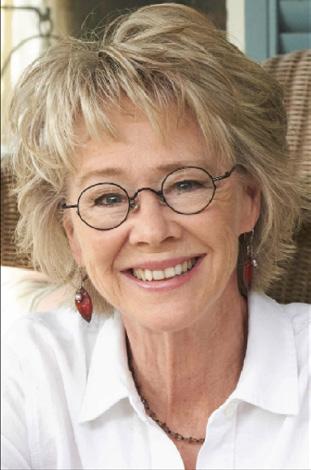
Gwenn Voelckers is a certified life coach, columnist and author of “Alone and Content,” a collection of inspiring essays for those who live alone. She welcomes your comments, questions, and inquiries at gvoelckers@rochester.rr.com
Albert S. Hartel, M.D.

Even though it is impossible to completely hide from the Rochester allergen onslaught, there are likely things you may be unknowingly doing that are making your allergies and asthma worse and amplifying the effects of exposures.
Allergic inflammation is cumulative and builds up so that the obvious things that give you symptoms may only be part of the problem.
utors can give you more cushion and significantly reduce symptoms and naturally minimize medi cation requirements.
1.
of dust mites crawling on your bedding, warm water doesn’t cut it.
Washing sheets at 140°F kills 100% of dust mites, while washing at 104°F eliminated just 6.5%. Don’t forget to wash the blankets and comforters too.
2.Getting the Cheap Air Filters.
Skimping on your furnace filter can be costly in terms of symptoms. HEPA certified filters are the
lates in the air that pass through them. Regular
bedroom and living room.
Physician Albert S. Hartel specializes in pediatric and adult allergy and immunology. He is the president of Allergy Asthma Immunology of Rochester. For more information, visit https://aair.info or call 585-442-0150.
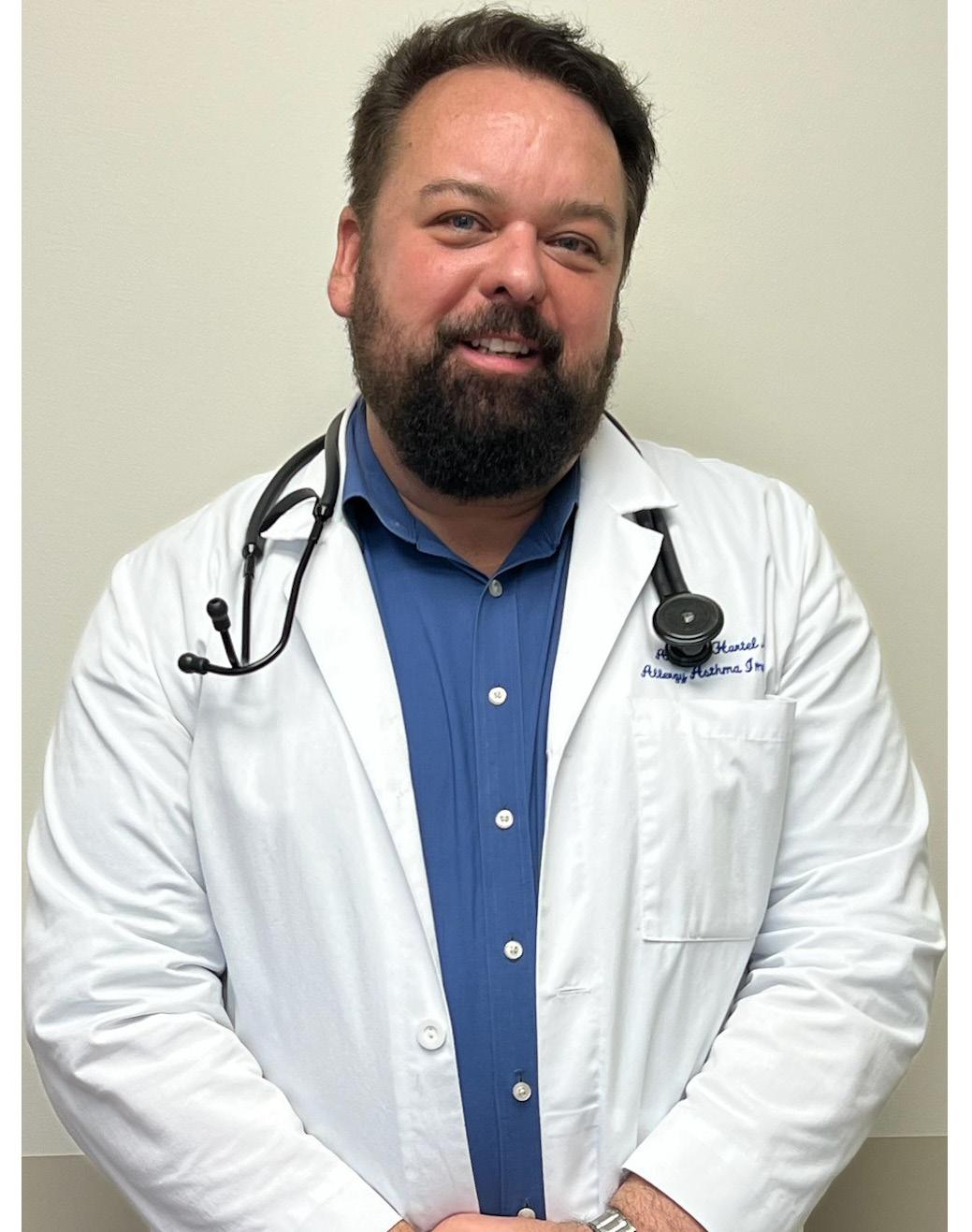
poallergenic” was a great marketing ploy by breeders. But unfortunately there is truly no such thing. Hair vs. fur makes no difference, as the allergen comes from skin, saliva and urine. The average “hypoallergenic” dog makes as much allergen per square inch of skin as any other dog. However, smaller dogs do have less skin surface area. Any dog means more allergen and also more pollen trucked in from outdoors.
4.Blaming it All on Germs.
If you need antibiotics for sinusitis or bronchitis every spring or fall, it’s likely more than just bad luck. Everyone gets sick, but if the cycle repeats itself the same time every year, its likely cyclic allergic inflammation making you more prone. If every cold and infection tends to spiral into the chest, that is also suspicious for underlying chronic allergic or asthmatic inflammation.
5.Open Windows.
When windows are open, outdoor pollen drifts inside and deposits all over your carpet, furniture and car upholstery and continues to induce symptoms, even after window is closed. Air conditioning is an excellent filter in the home and even in the car can reduce pollen by 30%.
6.Ignoring the Pollen Count.
Pollen counts report daily levels of allergens which can fluctuate greatly. The only Rochester pollen count is done by AAIR and can be checked by following us on Facebook.
7.Having Another Drink.
During fermentation of beer, wine and liquor, yeast and bacteria produce histamine, which can cause or enhance allergy symptoms. Red wine and beer contain the most histamine.
8.Stuffed Animals.
Stuffed animals are loaded with millions of dust mites and when they are in bed, the dust mites are also getting cozy with your kids. Anything that can’t be cleaned immediately should be washed weekly in super hot water or put in the freezer twice a week. Encasing the pillow and mattress also helps substantially reduce dust mites.
9.Letting Stress Build Up.
A recent article correlated persistent emotional stress with more frequent allergy flares. People with a negative mood also had more and allergy symptoms over the course of the study.
10. Plopping on the Couch After Spending Time Outdoors.
It feels good to kick back and relax after an outdoor run, heavy yard work, sporting events or just coming in to beat the heat. However, you bring in microscopic pollen on your clothes and hair. This gets left on bed and furniture for re-exposure for days. Showering at night also helps reduce the reservoir inside your house. Pets and even family members who aren’t allergic are trucking it in too.
11. Overmedicating.
The best treatment plan is to reduce exposures and minimize medications. More symptoms shouldn’t mean reflexively piling on more each year or long-term daily steroid inhalers. The best way to combat allergies and asthma is to find out exactly what you are allergic to and consider allergy shots to naturally turn off your body’s overreactions and chemical release. Shots can lead to long-term relief and often the ability to stop with continued benefit.
Air purifiers clean the air in a room by drawing in the air, trapping the airborne pollutants within it, and then pushing filtered, clean air back into the space.
Some of these airborne particles, such as pollen, pet dander and mold spores, are irritants that can aggravate people’s allergies.
These particles can make their way into our bodies as we breathe, causing runny noses, watery eyes and other adverse reactions in people who are sensitive to the allergens.
So do air purifiers help with allergies? In short, yes, they can, but only to a certain extent.
Air purifiers can be effective at
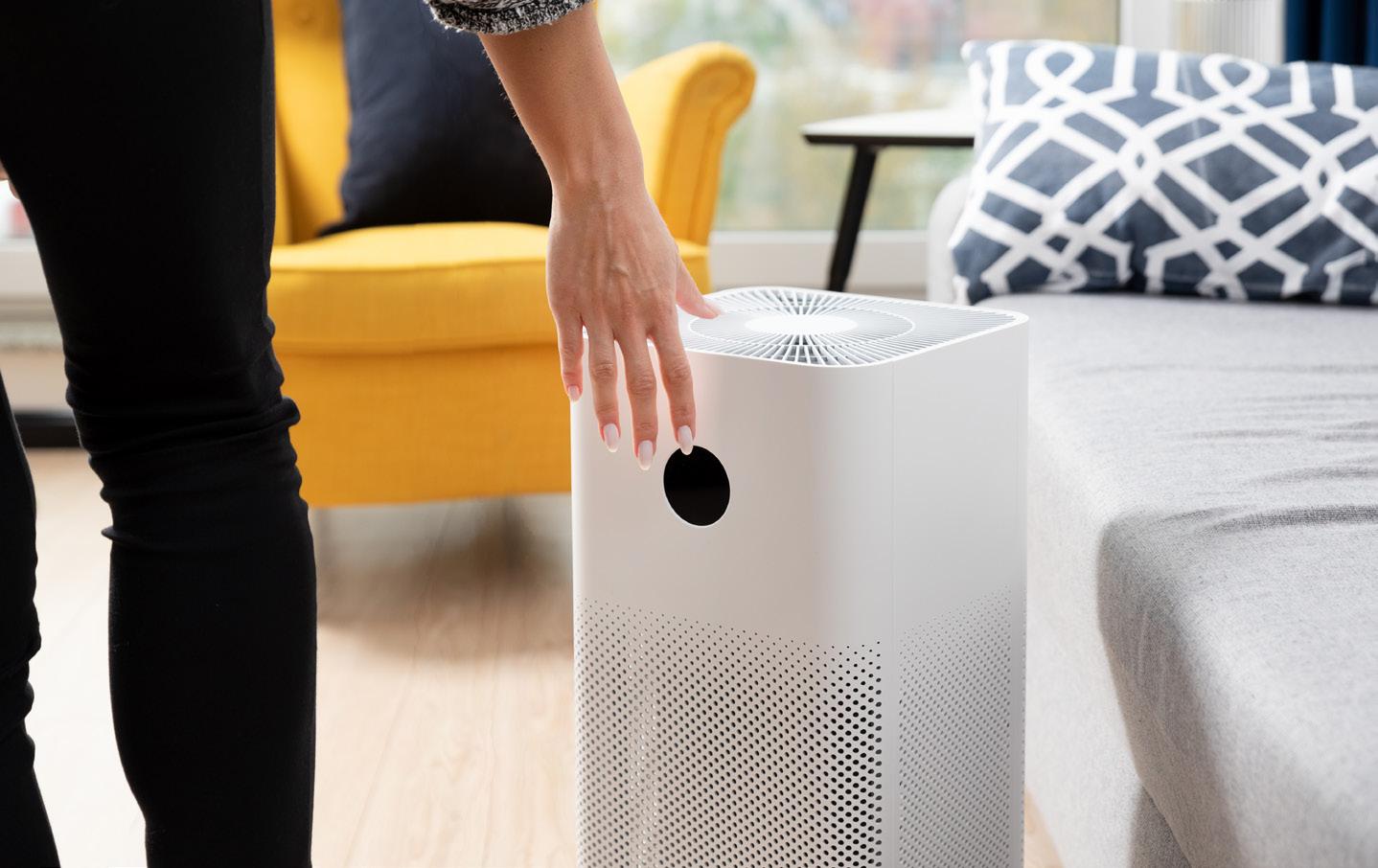
trapping the small particles that trigger allergies, preventing them from circulating in the air and then being inhaled.
However, these devices are not a complete solution, according to physician Payel Gupta, an assistant professor at the SUNY Downstate Medical Center in New York and a national spokesperson for the American Lung Association. “Each device has its limitations, and individual responses can vary,” she said.
Aneta Ivanova, a pediatric allergy nurse consultant for the Sandwell & West Birmingham Hospitals NHS Trust in Birmingham, England, agrees with that statement.
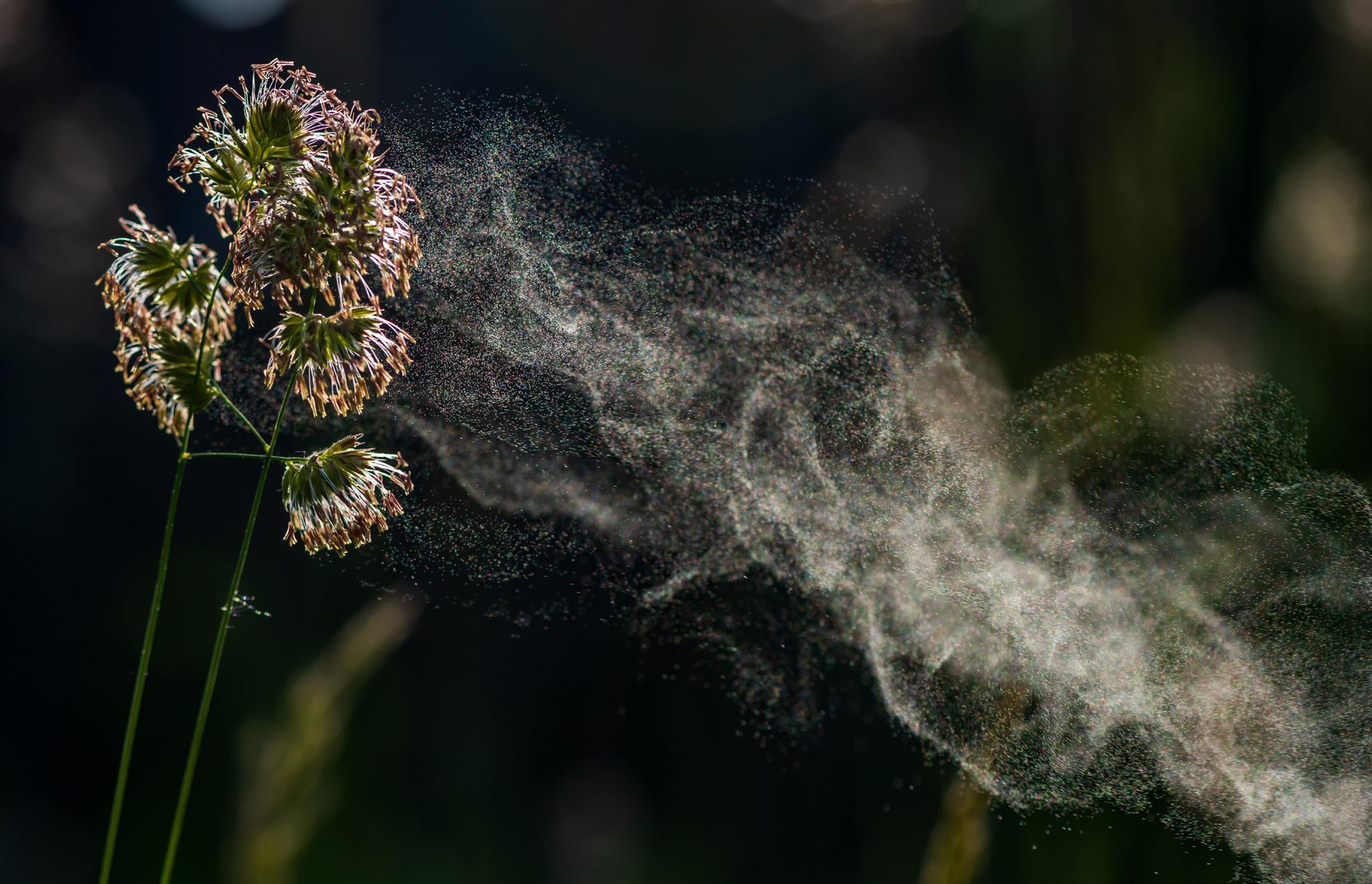
“Air purification is often recommended as a component of environmental improvement for patients with allergic respiratory disease, but there is little medical evidence to support that air purifiers help directly to significantly reduce allergies or respiratory symptoms,” Ivanova said. “There is a need for larger randomized control trials to be able to scientifically prove the true effectiveness [of these devices],” she said. (Randomized controlled trials include a placebo group, for comparison, and can provide direct evidence that an intervention relieves specific symptoms.)
Spring is officially here, and with it comes watery eyes, stuffy noses and constant sneezing for people with seasonal allergies.
And climate change means things are only going to get worse for allergy sufferers, a new evidence review suggests.
Allergy seasons are expected to get longer and grow more intense as climate change progresses, researchers say.
Total pollen emissions are projected to increase as much as 40% by the end of the century, as pollen concentrations increase under climate change, researchers reported April 9 in the journal The Laryngoscope. In addition, the pollen season could be as much as 19 days longer, researchers project.
While seasonal allergies might seem little more than a bother, they actually pose a serious drain on
health care resources that will only grow as climate change progresses, researchers said.
“While it may not be well understood by health professionals, the financial strain of this increasingly prevalent disease cannot be understated,” the research team led by Alisha Pershad, a third-year medical student at the George Washington University School of Medicine, said of seasonal allergies in a news release.
“The burden is approximately $3.4 billion, most of which is attributable to prescription medication costs and outpatient visits,” the team wrote.
For the study, researchers analyzed data from 30 previous studies, of which 16 reported longer pollen seasons or higher pollen concentrations related to climate change.
The studies also found that:
• Ragweed pollen tends to grow faster, flower earlier, and produce more pollen in urban areas affected by higher temperatures greenhouse gases like carbon dioxide.
• Cases of seasonal allergies have been increasing with pollen counts.
• Heavier pollen loads are producing more severe allergy symptoms.
• Doctors have noted changes in the pollen season and how they’ve increased cases of seasonal allergies.
“Physicians are uniquely positioned to witness the impact of allergic rhinitis on patient outcomes and can adapt their practice as climate change intensifies,” Pershad said.
“As trusted voices in the community, they should leverage their frontline experience to advocate for meaningful change in addressing the climate crisis,” she added.
Central New York Lyme & Tick-Borne Disease Alliance is sponsoring its Legs Against Lyme Walk at 10. a.m., May 31, at the Long Branch Park in Liverpool.
The event is designed to raise awareness for Lyme disease and raise funds that directly support efforts in research, education and patient support.
According to the nonprofit the challenges of Lyme and other tick-borne diseases extend beyond initial treatment. Persistent and often debilitating symptoms can significantly affect daily life.
The organization urges people, while enjoying the outdoors, to use an effective tick repellent, wear long sleeves and pants, and conduct thorough tick checks after any time spent outside. If you find a tick or develop symptoms like a rash, fever or unexplained fatigue, don’t delay in seeking medical attention.
Visit https://cnylymealliance.org to learn more about how you can get involved, volunteer and register for the walk.
Local cancer survivors and their caregivers will take the celebratory first lap at the American Cancer Society’s Relay For Life of Central NY presented by Upstate Cancer Center at Delta Lake State Park in Rome on Saturday, June 14. However, local survivors are encouraged to register now to receive their free cancer survivor T-shirt by mail prior to the event. Anyone who has ever been diagnosed with cancer and their caregivers are encouraged to join the celebration at Relay For Life. As the survivors walk, other participants will cheer them on in a demonstration of support and celebration. Each cancer survivor also receives a free commemorative T-shirt by mail, as well as other gift items the day of the Relay.
The Relay For Life is a community event where teams and individuals come together to honor, celebrate, and raise funds and awareness in an effort to free the world from the pain and suffering of cancer. Money raised will help the American Cancer Society provide free information and support for people facing the disease today, and fund cancer research that will help protect future generations.
If you are a cancer survivor or caregiver and would like to be part of the Relay For Life event, you are urged to pre-register for free by visiting RelayForLife.org/ CNY or simply call the American Cancer Society at 1-800-227-2345 and tell them you want to walk the survivor lap at your local event. Your T-shirt will then be mailed to you after you register. There is no charge to the survivor for the shirt or the postage.
By Anne Palumbo
Although strawberries are available year-round, nothing celebrates the warmer weather in Upstate New York quite like homegrown strawberries.
From our festivals to our u-pick farms to our shortcakes, life seems sweeter with fresh strawberries around.
It stands to be more nutritious, too, since our consumption goes way up when strawberry season is in full swing.
“Bursting with vitamin C” rarely comes to mind when one thinks of strawberries, but indeed this delicious fruit does.
Here’s a sweet surprise: One cup of sliced strawberries provides over 100% of our daily needs (nearly twice that of an orange).
Widely known for its immune-boosting and wound-healing benefits, vitamin C is also a powerful antioxidant that neutralizes unstable molecules that can harm cells and tissues. Too many of these unstable molecules—generated internally through normal cell metabolism and externally from environmental pollution (air, sun, smoke, etc.)—can lead to a wide range of health problems, including cancer, heart disease,

Crust:
diabetes and more.
Recent studies suggest that daily consumption of this antioxidant superstar may also improve memory, enhance mental wellbeing, and lower the risk of dementia, including Alzheimer’s disease.
Contrary to their sweet flavor, strawberries have a low glycemic index (GI), which means they cause a slower and more gradual rise in blood sugar, making them safe for people with diabetes and better for the rest of us, too.
More good news: You’re less likely to develop Type 2 diabetes if you satisfy your sweet tooth with natural foods like strawberries over highly refined foods like sodas, candy and cookies that put your pancreas through the wringer by causing big spikes and crashes in blood sugar levels.
Strawberries are also a delicious way to support heart health and manage cholesterol.
Recent studies suggest that regu-
Helpful Tips
Choose firm, medium-sized, deep red berries with bright green caps. Buy organic if possible. Wash strawberries only when ready to be eaten or used (moisture can lead to mold growth). Store unwashed berries in refrigerator; best eaten or used two to three days after purchase.
lar consumption of strawberries (1 or more cups a day) potentially reduces the risk of heart disease and stroke by lowering levels of LDL cholesterol and triglycerides, reducing inflammation, and helping to keep blood vessels in tiptop shape.
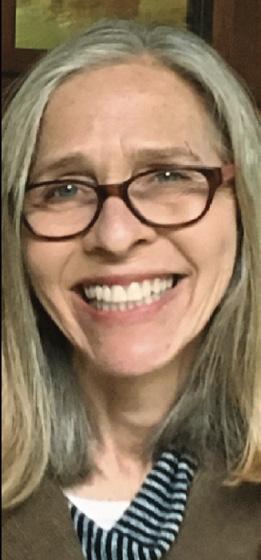

1½ cups all-purpose flour (spooned & leveled)
2 tablespoons sugar
¼ teaspoon salt
½ cup cold butter, cubed
3 tablespoons ice cold water, plus more as needed Or:
1 refrigerated pie crust (9-inch)
Filling:
3 cups sliced, fresh strawberries
2 tablespoons sugar
2 teaspoons cornstarch
2 teaspoons fresh lemon juice
Egg wash: 1 egg beaten with 1 teaspoon water; sugar for sprinkling
1. Make the crust: Whisk the flour, sugar, and salt together in a medium bowl. Cut the butter into ½-inch cubes. Next, cut the butter into the flour using a food processor (my preferred method) or pastry cutter, just until the mixture resembles coarse crumbs slightly smaller than a pea. Add
the water and toss until the flour is moistened and comes together a little, adding another tablespoon of water if the dough seems dry. (If using a food processor, slowly pulse in spurts.)
2 Dump the pastry onto a lightly floured work surface and, using your hands, work the dough into a ball. Flatten it into a thick 1-inch disk. Wrap in plastic wrap and chill for at least 1 hour and up to 3 days. (If using a store-bought pie crust, thaw according to package directions.)
3. Meanwhile, prepare the strawberry filling: Gently toss the filling ingredients together in a medium bowl until combined. Cover and refrigerate. Line a large baking sheet with parchment paper.
4. On a lightly floured surface, roll the dough into a 12-inch circle (ok if edges break and the shape isn’t perfectly round).
Anne Palumbo is a lifestyle columnist, food guru, and seasoned cook, who has perfected the art of preparing nutritious, calorie-conscious dishes. She is hungry for your questions and comments about SmartBites, so be in touch with Anne at avpalumbo@aol.com.
Transfer dough to the prepared baking sheet.
5. Spoon the fruit (discard any juices) into the center of the dough, leaving a 2-inch border all around. Gently fold the edges of the dough over the filling, overlapping the dough as necessary. Press gently to seal the edges. Brush the crust edges with egg wash and sprinkle with sugar.
6. Refrigerate the shaped galette for at least 15-20 minutes as the oven preheats.
7. Preheat oven to 400F. Bake galette until the filling is bubbly and the crust is golden brown, about 35-40 minutes. Cool on the baking sheet for 15 minutes before slicing and serving. Top with vanilla ice cream or freshly whipped cream (optional). Cover and store leftover galette in the refrigerator for up to 4 days.
By Barbara Pierce
“I just couldn’t believe that someone who had lived the life that I’d led, exercise and a good diet all the time. I thought that should last me for the rest of my life — but that’s not the case.”
This is how basketball legend Kareem Abdul-Jabbar describes his atrial fibrillation, also known as AFib. You’ve probably seen his commercials, he’s working to raise awareness about AFib, a common type of irregular heart rhythm that can lead to blood clots and increase the risk of stroke.
We asked physician Cynthia Jones, medical director of Mosaic Health and president of the board of directors at American Heart Association of the Mohawk Valley to help us understand AFib.
“Atrial fibrillation, also called AFib or AF, is the most common type of irregular heartbeat. The abnormal firing of electrical impulses causes the atria (the top chambers in the heart) to quiver (or fibrillate),” said Jones.
AFib is the most common type of irregular heartbeat. Anyone can develop AFib. More than five million people in the U.S. live with A Fib. The chance of AFib goes up with age and people are living longer. Experts think many more people will develop AFib in the coming years, she added.
“AFib absolutely increases your risk for a stroke,” she said. “Here’s what happens with AFib and why it increases your risk of stroke:
The heartbeat quivers in an er-
ratic way. The upper chambers of the heart (the atria) contract irregularly.
The contraction fails. Imagine wringing out a sponge. Without a good squeeze, water will still be left in the sponge. In the same way, when the heart contracts too fast or unevenly, it doesn’t completely squeeze the blood from the atria into the next chamber.
Blood pools in the atria. Blood not pumped out of the atria can remain and may pool there.
Risks of clotting increase. When blood can pool, it can form clots.
Clots can travel and cause blockages. If a blood clot forms in the atria, it can be pumped out of the heart to the brain. This can block the blood supply to an artery in the brain and cause a stroke. This type of stroke is called an embolic stroke, which is a type of ischemic stroke.”
Experts say people with AFib are about five times more likely to have a stroke. It’s important to know that not only is there a greater risk of a stroke, but AFib-related strokes are likely to be more severe than other kinds of strokes.
“Not everyone has symptoms of AFib,” Jones said. Some have no symptoms or awareness that they have AFib.
“This is why regular doctor visits are so important and why it’s important to know what’s normal for your body,” Jones added. “If something changes, ask your doctor about it.
“The most common symptom of AFib is a fluttering heart. Other symptoms include general fatigue, a rapid and irregular heartbeat, futtering or thumping in the chest, dizzi-
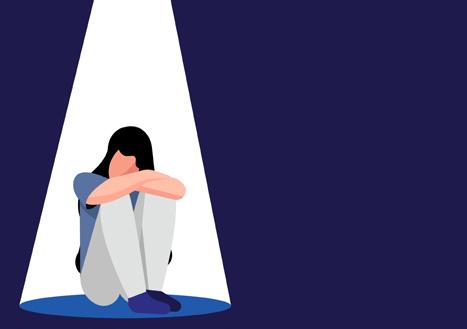
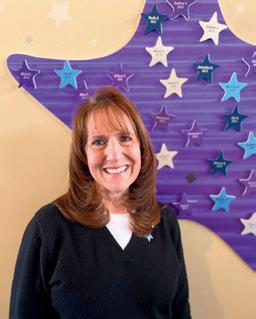






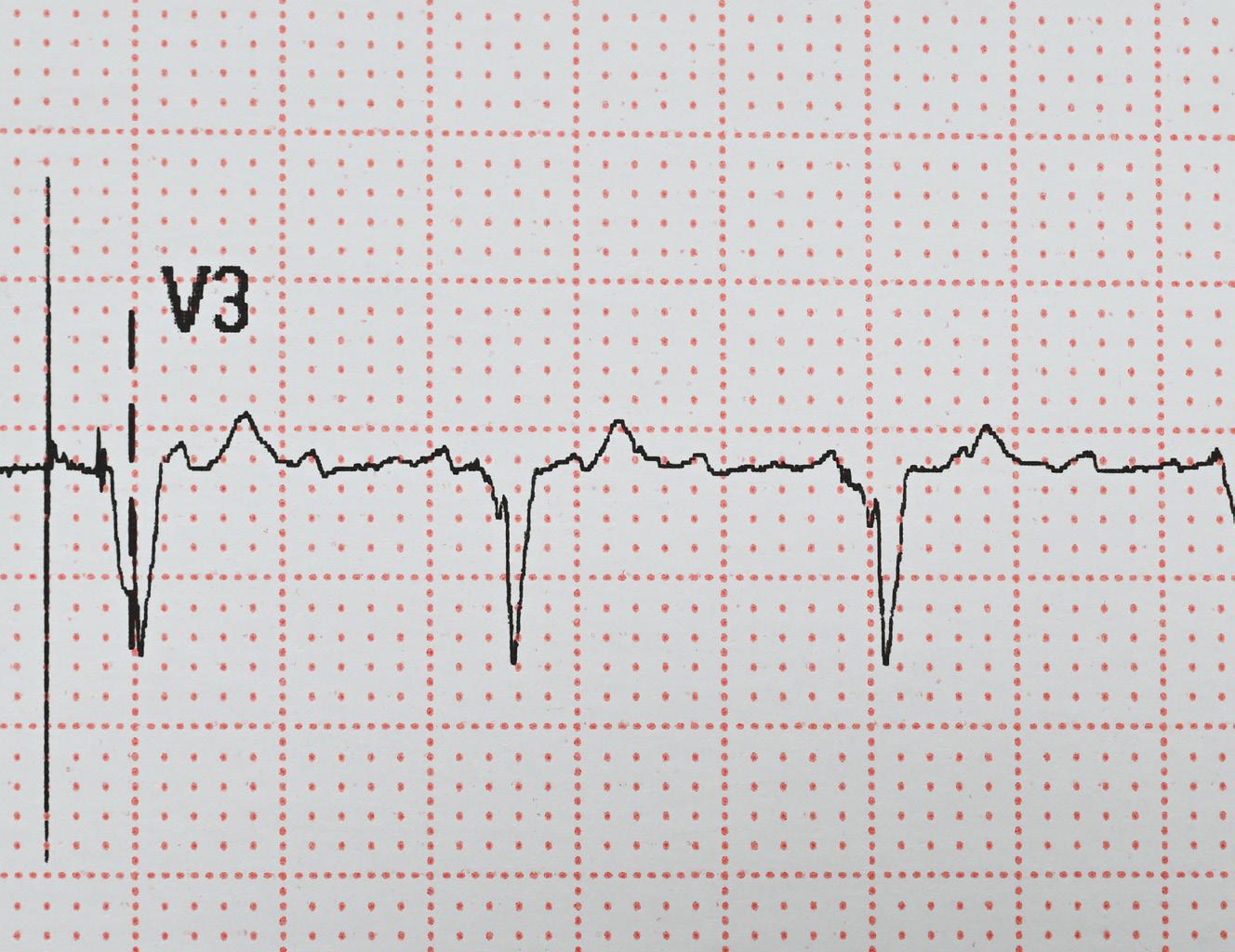
ness, shortness of breath and anxiety, faintness or confusion, fatigue when exercising, chest pain.”
Chest pain or pressure should be of serious concern.
“If you ever feel chest pain or pressure, please call 911 immediately,” Jones said. “You could be having a cardiac emergency and require immediate care.”
Yes, there definitely are options that reduce the risk of a stroke associated with AFib.
“Treatment for AFib varies,” Jones said. “Based on the causes, the severity and the goals of treatment. It’s really important that you work with your health care provider to make sure you’re getting the right treatment and that you’re following it.
“Treatment can include medication like blood thinners, heart rate controllers and heart rhythm controllers.”
Blood thinners (anticoagulants) help reduce the risk of blood clots forming. Today, blood thinners, taken orally, are often the first choice of treatment. By delaying blood clotting, blood thinners make it hard for clots to form and prevent existing clots from growing.
If you are prescribed a blood thinner, always take it exactly as prescribed by your health care provider.
Non-surgical procedures like electoral cardioversion or ablation are also used to treat AFib, Jones added.
“Cardioversion resets a heart rhythm. In an ablation, the doctor carefully destroys malfunctioning

tissue using the catheter to deliver energy (such as radiofrequency, laser or cryotherapy) to scar the problematic areas. The scarred areas will no longer send abnormal signals,” she said.
Those who can’t use blood thinners or non surgical options may need surgical procedures to treat AFib, such as implanting a pacemaker, an implantable cardioverter defibrillator or internal cardiac defibrillator.
5.How successful are these treatments?
Treatment can be successful; but it’s important that you work with your health care provider and stay in close touch if things don’t feel right, she said.
By Barbara Pierce
Regular physical activity is one of the most important things you can do for your health.
Physical activity can prevent or delay many of the health problems that seem to come with age.
Staying active and moving regularly is crucial to continuing to live independently, preventing falls, improving physical and mental health and managing chronic conditions.
“Exercise is the most potent drug in our arsenal,” says physician Peter Attia in his book “Outlive, the Science and Art of Longevity.”
“The data is clear; exercise not only delays death but also prevents both cognitive and physical decline better than any other intervention,” Attia says in his book.
Moving is one of the best ways to age well and to help reduce the risk of developing heart disease, diabetes and obesity.
What happens when you’re not active? You may become constipated, your joints become stiff, you’re out of breath easier, you may be moody, may feel tired much of the time, don’t sleep well, you may be forgetful, your blood pressure goes up, your back hurts, your immune system falters, you eat more and gain weight, you lose muscle strength and endurance.
Pretty bleak picture, right?
Yes, physical activity is critically important. It’s the key to well-being.
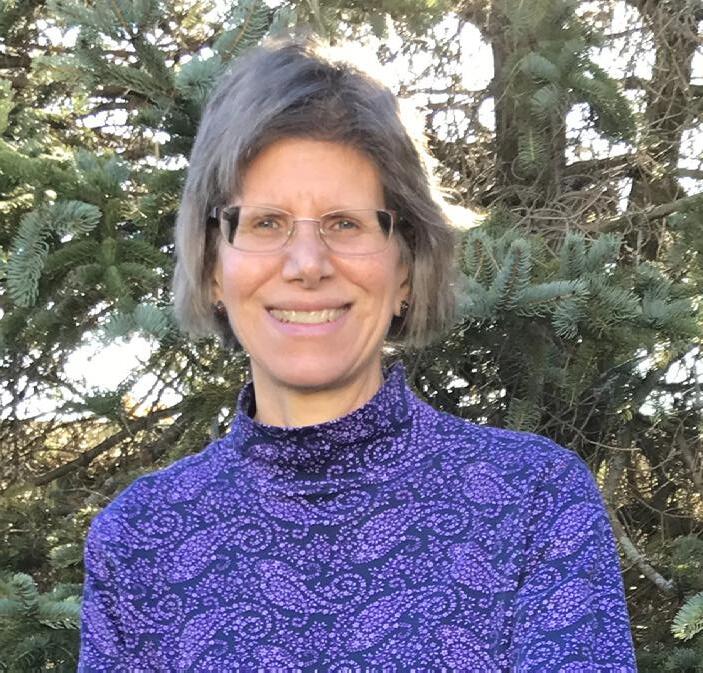
The one thing that helps us age as best we can.
No matter how old you are, how inactive or how out of shape you are, being physically active is essential. Do things that you enjoy, so you’ll stick with it — like working in your garden, walking, dancing, sports, yoga, tai chi, going for a bike ride.
Doing what you enjoy is important.
“I was in my 50s when I began the practice of yoga,” said 77-yearold Lorraine Arsenault of Canastota. “I had a knee issue that kept me from impact sports and I needed a way to stay active. I also had a lot of stress in my life. Consistent practice brought me to my center, healed what needed to be healed so at 58, I trained to
By Deborah Dittner
In your golden years, the need for socialization is crucial.
Sadly, loneliness seems to be taking center stage for many.
Negative health effects created from this solitude are rising. Social activities such as clubs, theaters, playgrounds, volunteer activities and music venues that were once abundant, have dwindled.
You go to work traveling by car and return home to then turn on the television with little to no interaction with others.
Screen time on phones has skyrocketed removing you from activities that you used to enjoy. Downtime has left the outside world and has become a technological game of texting, scrolling and depleting social skills. There is great importance in physically meeting others which needs to return to your everyday existence.
The cost of the lack of socialization in the aging population appears to have an increase in developing dementia.
Of course, lack of socialization is not the only factor in the development of dementia. Conditions contributing to this include diabetes,
be a teacher. I’ve been teaching ever since.”
Arsenault is the founder and operator of The Place at Center in Canastota where she teaches yoga. “My mission is to bring yoga to anyone who seeks it,” she said.
“I believe we’re never too old to start yoga or tai chi,” she added. “There are modifications to make these practices accessible to everyone. For those who aren’t comfortable getting to the floor, we offer chair yoga. For those with chronic health conditions, sleep issues, limited mobility and especially those seeking stress relief, we offer restorative yoga. There’s a practice for everybody.
“It’s a fact that, as we age, we become more anxious, bones and muscles weaken, joints stiffen, breathing becomes more shallow and balance declines. Both yoga and tai chi are meditative practices that promote calmness, flexibility, strength, increase lung capacity and improve posture and balance.”
Marchell Scarano, a 72-year-old Little Falls resident, also enthusiastically embraces yoga. The owner and operator of Yoga and Wellness in Little Falls, she has found yoga helps her age well.
“When I was 68, my doctor said ‘You have no arthritis in your knees. That’s very unusual for a person your age. The yoga practice you’ve done helped much. Your bones are great.’”
Four years ago, Scarano was in a severe car accident, hit head-on by a truck.
“It shattered my leg and both bones in my arms,” she said. “I was severely injured. I’d been doing all the traditional aerobics. But I realized
what I’d been taught didn’t work. I turned to yoga for flexibility and strength.”
Yoga brought her through to recovery.
“I definitely recommend yoga,” she said. “At my studio, we do several different types of yoga. I just started a chair yoga class. Now I have three classes, with people older than 60. Many have had knee or hip replacements or cancer.
“Many had never done anything physical, but found they needed more flexibility. Once you lose your flexibility, you lose so much.”
Like yoga, tai chi has significant benefits for older folks.
“Tai chi is a slow-moving meditative exercise that began in ancient China years ago,” said instructor Rosann Scalise. “Tai chi consists of fluid, gentle movements that are relaxed and slow in tempo. It can be practiced anywhere and is a suitable form of exercise for just about anyone. It has demonstrated under studies to have a powerful effect on health.”
Scalise teaches a beginner class offered by the Dolgeville-Manheim Public Library, at the Bassett Community Center, and an advanced class offered by the Mohawk Valley Center for the Arts, at the Little Falls Library. The classes are free.
“Newcomers are welcome,” she added. “The students really enjoy the program. They’ve told me their balance has improved, they walk and stand better, they feel surer on their feet and feel calmer and relaxed.”
You can come up with a million reasons for not being physically active. Some might be valid. But remember: stillness is bad in so many ways.
mental health issues, obesity and cardiovascular problems such as hypertension.
As one ages, incorporating socialization into daily activity may be of benefit, delaying the possibility of dementia.
Frequent socialization aids in cognition, delaying signs of dementia by approximately five years. Connecting with the outside world aids in brain health, keeping you independent and productive longer.
Connections with your peers, with children, with those you meet on the street, challenges you mentally and physically through conversation and activity.
In turn, socialization may reduce stressors of everyday life as you use brain function to communicate your feelings, concerns, thoughts, teachings and more to those around you.
With socialization comes the balance of hormones as this challenges brain function. And then there is physical activity which many social engagements encourage, all protecting body, mind and spirit.
To maintain socialization, you may wonder, “but what am I to do?” It can be very simple so don’t try to
overthink or complicate the prospects. Some possibilities:
• Volunteer — find a cause that you are passionate about and join in. Animal shelters if you’re a pet lover, libraries if you love to read, grandparent programs at daycare, preschool and elementary schools, senior centers, delivering Meals on Wheels to those homebound, home health agencies, veterans’ groups, literacy and mentoring programs. A multitude of possibilities.
• Physical activity — staying active through fitness classes (yoga, chair yoga, tai chi) or walking groups. Many of these activities meet anywhere from once to multiple times a week so you get to choose. These possibilities allow you to socialize and gain physical benefits.
• Clubs — a shared interest in a topic encourages active conversation. Check out local bookstores for book clubs on various topics. Do you love to knit or crochet? Search for a local yarn store that may produce items for town raffles. What other hobbies do you have that you can socialize with? And don’t forget gardening groups especially as spring planting is around the corner. Community gardens attract conversation and the growing of yummy vegetables.
• Education — have you ever wanted to learn a new language or different gardening practices or possibly a different career? Schools often offer adult education courses such as
cooking classes for specific cuisines. It’s never too late to enroll in a class or workshop, as this promotes not only socialization but also encourages brain health.
• Family and friends — whether living in the same town or many miles away, catching up possibly through Facetime or phone or meeting up for coffee or dinner once a week or month will stimulate conversation and improve socialization.
• Off the cuff — start up a conversation with a total stranger at the coffee shop while picking up your morning cup o’joe, while standing in line at the grocery store or while wandering through an antique shop or garden center. There’re many interesting people out there to enjoy.
Socialization, in whatever means you decide upon undertaking, will only improve your quality of life by aiding in brain health and physical health, adding additional years of cognition and even a new friend or two.
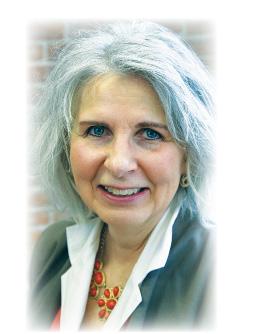
as possible through nutrition and lifestyle changes. www. debdittner.com